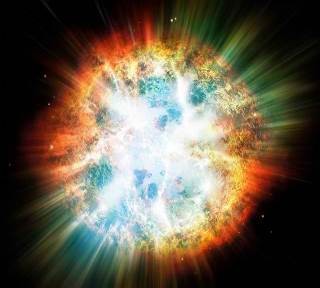A violent stellar explosion, known as a supernova, was spotted Thursday, Jan. 14, by an international team of astronomers led by Subo Dong from China's Peking University, the Xinhua News Agency reported.
The explosion, called ASASSN-15lh, was believed to be about 200 times more powerful than a typical supernova and more than twice as brilliant as the previous record holder.
The report said that the supernova shone brighter than 570 billion suns at its peak intensity.
As reported in the U.S. journal Science, the record-breaking blast is considered to be the best example of a "superluminous supernova," or a rare variety of explosion unleashed by certain stars when they die, which has been recently discovered.
Scientists, however, were at a loss regarding what type of stars and stellar scenarios could be responsible for these extreme supernovae.
"ASASSN-15lh is the most powerful supernova discovered in human history," said the study lead author Dong, an astronomer and a Youth Qianren Research Professor at the Kavli Institute for Astronomy and Astrophysics (KIAA) at Peking University. "The explosion's mechanism and power source remain shrouded in mystery because all known theories meet serious challenges in explaining the immense amount of energy ASASSN-15lh has radiated."
ASASSN-15lh was about 3.8 billion light years from Earth and the All Sky Automated Survey for SuperNovae (ASASSN) team, an international collaboration headquartered at the Ohio State University caught a glimpse of the explosion in June 2015.
The report said the team uses a network of 14-centimeter telescopes around the world to scan the visible sky every two or three nights to look for very bright supernovae.
According to the astronomers, the ASASSN-15lh's features are consistent with "hydrogen-poor" (Type I) superluminous supernovae, which are named for lacking the chemical element hydrogen in their spectra, as further observation revealed.
ASASSN-15lh is also distinct since it is hotter, and not just brighter, than its apparently nearest of supernova kin, the researchers said.
Although Type I superluminous supernovae have burst in dim galaxies both smaller in size and with stars much faster than the Milky Way, the ASASSN-15lh's galaxy appears bigger and brighter than the Milky Way.
The researchers also believed that ASASSN-15lh's extraordinary emission of luminosity may be powered by a huge amount of decaying radioactive nickel, or a rapidly rotating, highly magnetic neutron star.
"The honest answer is, at this point we do not know what could be the power source for ASASSN-15lh," Dong said. "ASASSN-15lh may lead to new thinking and new observations of the whole class of superluminous supernova, and we look forward to plenty more of both in the years ahead."



























